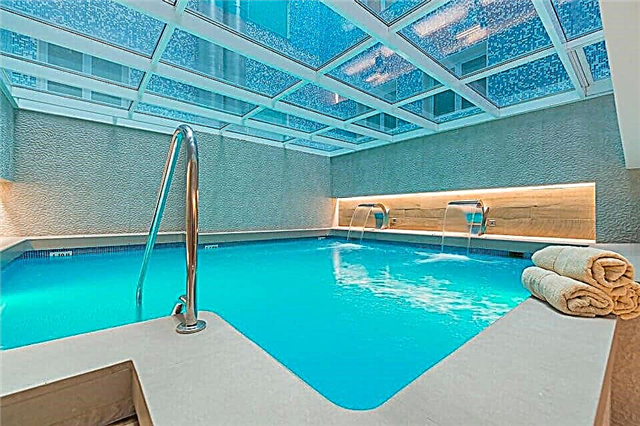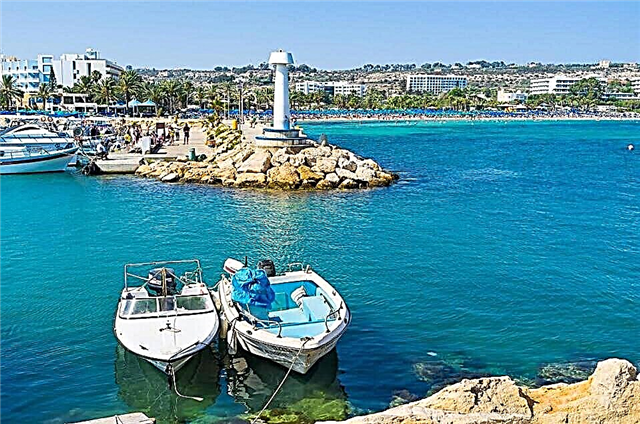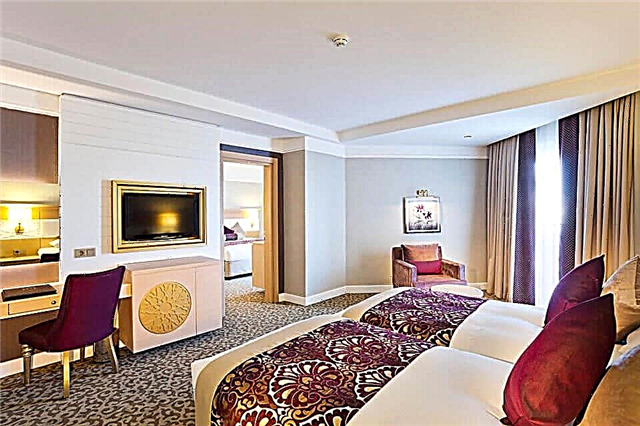Among the many attractions of the capital of Germany, this architectural monument occupies a special place. The Brandenburg Gate in Berlin, built over 225 years ago, is famous not only for being the only surviving part of the customs fence. The world-famous building, decorated with a quadriga, has become a symbol of the unification of Germany and the fall of the Berlin Wall. No visit to the main German city is complete without a visit to the grandiose arch, the image of which is engraved on coins in denominations of 20 and 50 euro cents.
Construction history
In the 18th century, parts of the protective structure - the customs wall - were still preserved in Berlin. It ringed the city and consisted of 14 aisles. Only the Brandenburg Gate (originally the Peace Gate), built between 1788 and 1791 during the reign of Kaiser Wilhelm Frederick II, has survived to this day. By his order, the architect Karl Gotthard Langgans erected a structure - an arch copied from the main memorial entrance of the Athenian Acropolis. The road through it led to Brandenburg, the city that gave its name to the western entrance to the capital.

In 1793, a quadriga designed by the German artist and sculptor Johann Gottfried Schadov was placed on top of the structure. The chariot, driven by the goddess of peace, Eirena, has its own history: in 1806, Napoleon, having conquered Berlin and received the keys to the city, dismantled the quadriga as a sign of his triumph and brought it to France as a trophy.
Eight years later, after the defeat of the army of the great Corsican, the chariot solemnly returned to its rightful place, and the goddess, now called Victoria, received an iron cross, crowned with a laurel wreath and the sign of Prussian power - an eagle.
Between 1814 and 1919, only the royal dynasty, ambassadors of other states and representatives of the family of General Karl Pfuel were allowed to pass through the central arch. In 1933, Hitler's supporters greeted their leader with torches at the majestic building, thus marking the beginning of a dark period in the country's history.
The split of Germany
In 1945, the banner of the victory of the USSR fluttered over the triumphal arch, and in 1957 the flag of the GDR was raised. 4 years later, as a result of negotiations between the Warsaw Pact countries, the construction of the Berlin Wall began - a 44.75 km long defensive structure fortified with earthen moats, which divided the city into two parts.

During this tragic time, the Brandenburg Gate was located on a forbidden territory. Only East German border guards were allowed access to it. The stone structure personified the split of the once united country into two states and the separation of families, whose members found themselves on opposite sides of the border. Its crossing threatened with immediate death. The fall of the wall in December 1989 re-opened access to the historic monument, which has become a symbol of peace and free Germany.
Description

The most famous Berlin landmark is the triumphal arch, located at the intersection of two central districts - Tiergarten and Mitte. On the west side, the 18 March Square (Platz des 18. Maerz) adjoins the Gate, and on the east - Parisian Square (Pariser Platz).

The material for the construction was stone blocks faced with Saxon sandstone. The height of the structure is 26 m, the width is 65.5 m. The structure consists of two rows of columns 11 m thick, placed on six supports, forming five through passages. Initially, buildings for customs and military needs were installed on both sides of the Brandenburg Gate. In 1867/68 they were replaced with open porticoes and lined with an arch.

The entire structure is crowned with a six-meter copper quadriga - four horses, ruled by the winged goddess Victoria. In her hands is a wand with the image of a cross, an eagle and laurel leaves. The winner's gaze is directed to the east. In the north wing, in the former guardhouse, there is the Hall of Silence. The purpose of its creation is to remind people of the tragic pages of German history.
In the southern part there is a tourist office, where you will be informed about the fastest and most convenient routes, the repertoire of theaters, concert venues, current events and hotel availability. Opening hours: daily from 9:30 to 18:00.
Artistic value
The construction of the arch marked the beginning of a new era, reflecting the change in the architectural appearance of the city, which was dominated by the Baroque until the 18th century. The gate was the first building in the style of German classicism. Samples of the architecture of Greek and Roman antiquity were taken as a model for it.
An imitation of antiquity can be seen in the design of the central part of the composition, characterized by six 15-meter Doric relief columns. The diameter of their base is 1.75 m. Structurally, the columns differ from the classic Athenian prototypes in that they are reinforced with massive load-bearing masonry inside.

In the niches of the openings are the statues of the militant Mars and Minerva sitting on the throne with a spear. The ceilings, the attic and the inner walls are decorated with allegorical engravings illustrated with images of mythical scenes of the exploits of Hercules and the wars of the Thessalian Lapith tribe with centaurs. According to the author, Johann Shadov, heroic themes should evoke an association with the reign of the monarch Frederick Wilhelm II, who turned Prussia into a powerful state.
Restoration of the monument
The bombs of the Second World War caused significant damage to the architectural masterpiece. The quadriga suffered the most. Its remains were sent to the warehouse of the West Berlin firm Noack. In 1950, the governments of East and West Germany - although not without friction - agreed on a joint restoration, which was completed only six years later.

In 1958, the arch was again decorated with a chariot, cast according to the original casts. The renewed quadriga lost an important detail - an iron cross with the image of a Prussian eagle enthroned. The authorities in the eastern part of Germany initiated the removal of these regalia. In their eyes, the cross symbolized the Nazi regime.
The victorious Victoria returned her trophy only after the unification of the country, which took place in 1989. However, the joy of the reunited Germans was so great that on New Year's Eve 1989/90 it contributed to the fall of the long-suffering quadriga. And a year later, the historic gates were closed again for restoration. It was carried out by a private foundation for the protection of monuments and monuments, spending 4.3 million euros.

The restorers focused their main attention on strengthening the rigid structures. In addition, with the help of a new laser system, the blackouts formed on the western side of the structure were eliminated. On the Day of Unity, October 3, 2002, the grand opening of the monument took place. The site is currently under threat again. The construction of a new metro line passing under the structure caused a crack on one of the columns.
Contemporary ensemble
In order to preserve the sandstone facade from exhaust fumes, in 2002 the Berlin Senate closed the territory adjacent to the Brandenburg Gate to transport. Paris Square, which has the shape of a square, has also been turned into a pedestrian zone. Currently, the triumphal arch and the newly built nearby buildings form a single ensemble.
To the right and left of the Gate are the symmetrical houses of Liebermann and Sommer, erected on the model of the completely destroyed structures created by the Prussian architect Friedrich Stühler. The classic style of the lost buildings is also copied by one of the most luxurious hotels in Germany - Adlon.

On the south side, next to the hotel, you can see the glass façade of the Academy of Arts and the Dresdner Bank branch, designed by the prominent American architect, Frank Gehry. The ensemble is completed by the US Embassy built in 2008. In the north, the Kennedy Museum and the French Embassy are adjacent to the arch. Two twin fountains adorn the Parisian square.
Brandenburg Gate today
Now the famous landmark is not only a must-see item on the tourist program of travelers. Hundreds of thousands of residents and guests of the German capital gather here several times a year. Their goal is to participate in major events such as public holidays, sporting events, New Year's Eve and free gala concerts.

New Years Eve is an annual grand performance starting on the morning of December 31st. Famous musical groups perform on the stage in front of the historical monument. After 9 o'clock in the evening there is nowhere for an apple to fall - the street from the Victory Column to the Russian Embassy, 2.3 km long, is filled with people. Exactly at midnight, the sky above Berlin is illuminated by millions of multi-colored lights from the world famous fireworks.
Berlin Marathon. Traditionally, a marathon is held in the capital of Germany on the last weekend in September. More than 40 thousand people take part in it, including not only eminent athletes from 120 countries, but also all runners. The 42 km finish line is at the Brandenburg Gate.
The Fan Mile is the largest gathering place for football fans in Germany. During the World and European Championships, the area in front of the stone arch is transformed. An 80 m2 screen is installed on the 18 March Square. Thanks to six more huge monitors on display for two kilometers along 17 June Street, everyone can watch the progress of the matches and cheer for the national team.

Where is the Brandenburg Gate and how to get there
The famous landmark is located in the city center near the embankment of the Spree River.
Getting there using public transport will not be difficult:
- By city train (S-Bahn): lines S1, 2, 25 and 26 to Brandenburger Tor station.
- By bus: Routes 100 and TXL to the Brandenburger Tor stop.
- By underground: line U55 to Brandenburger Tor station; U2 - to Potsdamer Platz. And although this road is the longest (15-20 minutes walk), we recommend choosing this one. On the way to the Brandenburg Gate, you can explore interesting sites such as Potsdamer Platz and the Holocaust Memorial.
The exact address is Pariser Platz, 10117 Berlin. Coordinates for the navigator: 52 ° 30'57.0 ″ N 13 ° 22'40.8 ″ E.
We recommend the following hotels in Berlin:











